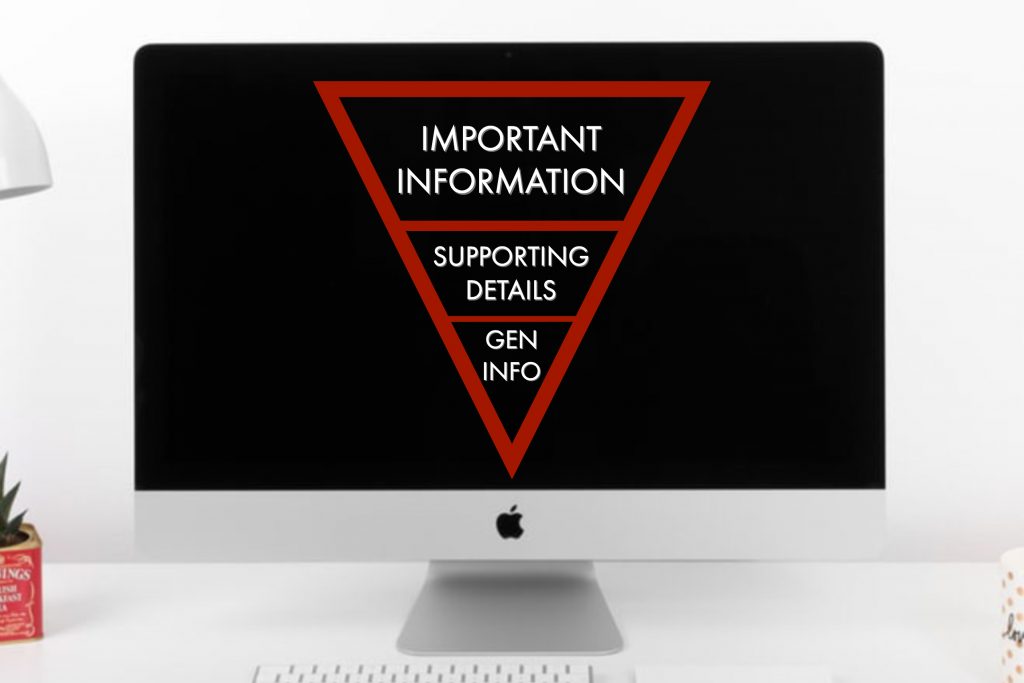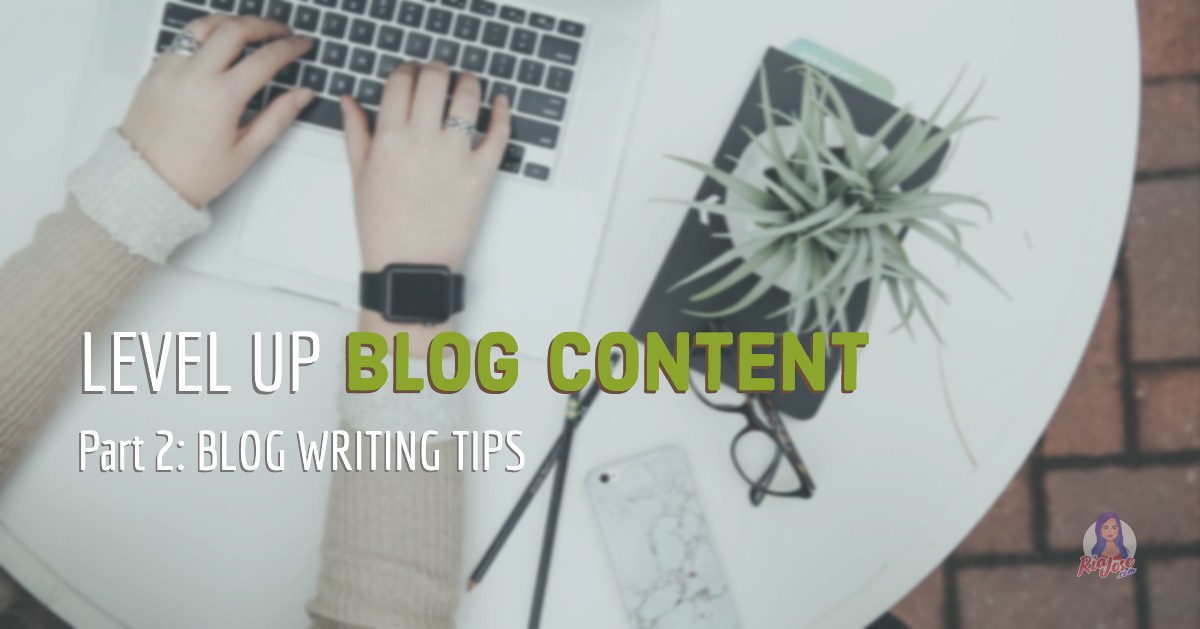Two months ago, I shared my WordCamp Davao Talk on 10 Ways to Level Up Blog Content. I discussed the first part of my content production process, Pre-Writing and all the work that goes into each post before I even start writing the post itself. In this post, I will share with you my Blog Writing Process and a few tips that can help you level up your content.
To recap, sharing again with you here the summary presentation of my 10 Ways to Level Up Blog Content talk.
This slideshow is modified and simplified from the one I presented during WC Davao. You can see and download a more detailed slideshow on SlideShare. Here is the LINK.
The talk and this blog post series are designed to guide bloggers and content managers who need a little push and inspiration in the writing process. These slides and information in my Blogging 101 and Blogging 102 Workshops, in one form or another. Bloggers and those who are looking at starting their own blogs usually ask for steps and practical tips to make blog writing easier.
Related Link: Part 1: Pre-Writing
Part 2: Blog Writing covers tips #4 to 7. The discussion is quite detailed and extensive just to cover all bases. You may or may not follow the steps I suggest but there are definitely a few tips here that are useful to all.
Start with a Bang
So how do you start writing exactly? Open with a bang. Start with a hook that will catch the attention of your readers.
There are many kinds of hook. You can open with a quote, a question, an anecdote, a fact or statistic, or anything that will set your reader in the mood to read more about your topic. Make it catchy but make sure it will fit right in with the tone and flow of your post.
More than being catchy and attention-grabbing, your opening should contain all the most important information. But just enough to encourage your readers to read more. Make it attractive and substantial. Think of it as your pickup line. That something that will draw your audience closer to your content.
A good opening takes a lot of work. But if you put in the work to make sure it has impact, the payoff will be great. Your reader will not click on that X button to close the tab.
Build An Attractive Body
Writing the post itself is what people find difficult. How do I write about something I have already shared about in my opening? How do I make it interesting?
Every person works differently. Some people like doing outlines. Others are more comfortable with free writing. You can do either… or try both. Personally, I do both. Depending on my mood and what the topic is. Whatever gets you writing. Do it.
Here’s a tip: Just start writing. Do not be stressed out by grammar and writing rules. Yet. That comes later. You do not even have to write in English. Just write, write, write.
Blog Writing Guide: The Inverted Pyramid
A good place to start is always with the basic information: what, who, where, when, why, and how.

If you have not established your own blog writing style, the easiest guide to follow is the “inverted pyramid.”
All the important information should be on top. Do not make your readers scroll, scroll, scroll just to find the important information. Do not make them work hard. Everything they need should either be on top or easily visible. More on that later.
After you have shared the important information, move on to supporting details, opinion, insights, and other stuff that would support or enrich the information at the top.
Finally, if there is more information that is not vital but would be nice to know, add them at the end. Pertinent links, resources, and other general information belong at the end. These may include about info about the venue, the brand, organization, or person involved but not central to the topic.
Blog Writing Tip: USE HEADERS
Make sure that your content is easily digestible. And going back to helping your reader find what they need, draw attention to different parts of your content by using Headers.
Some people… most people do not really read anymore. Rather, they scan or browse through content and look for that thing that they are looking for or that something that intrigues them. So use headers to direct them to what they need.
You can also use bolds, ALL CAPS, and italics to make specific parts of your article stand out. But do so wisely. Strategically. And consistently. Do not just randomly use ALL CAPS.
Remember that the internet is full of content and information that readers can consume. And every reader can easily click on that close button and move on to the next post. Your goal is to be read, understood, and trusted. And the best way to do all three within one post is to KISS.
Blog Writing Tip: KISS
KISS stands for “Keep It Short and Simple.” (Or for some… “Keep It Simple, Stupid.” Hehe!) Give the important information the reader is looking for. Support with details. And add just enough general information just in case they need it. No need to have a thousand words within one post. Unless the topic warrants it. And good, well-planned blog post topics rarely need that much words.
Keeping it short and simple does not just refer to word count. Choice of words also matter. Every word you use matters. So make sure to choose the right and appropriate ones. Two words may be synonymous but it does not mean they both have exactly the same meanings. Every word has a denotation and a connotation. Know both before you use a word.
And here is another thing to note: Not all your readers have English as their first language. So keeping it simple, makes you understood better. Use simple words. Keep sentences short. Keep paragraphs short. Make your point. Just one point. And end right there.
Again, do not make your readers work too hard. The harder you work on blog writing, the easier it is to digest your post. So take time to choose the right words. To compose your thoughts in simple, short sentences and paragraphs.
Say it with me: “KEEP IT SHORT AND SIMPLE.”
Use MEDIA Wisely
The easiest way to make your post even more attractive is by way of using media. After all, a picture paints a thousand words. But are you using media strategically?

Media does not just refer to photos. You may use a photo to show something. But there are instances when a gallery is better than a single photo. Or maybe a video would serve your post even better? And maybe you could explore embedding an audio? A playlist, a podcast, or just a single song could make your blog post a million times better.
Just make sure that whatever media you are using actually works with and complements your text content. Just as one thought flows into another by way of words or sentences or paragraphs, the media you use must flow naturally with the rest of the post.
Bigger does not mean better. Make sure your media does not slow down the loading of your post. I use 1200px images for most of my blog posts across all my blogs. I find that this is the image size that loads with good quality without slowing down the page loading time. It also works well with most screens, be it desktop, tablet, or smartphone.
Also… more is not always merrier. Choose your media carefully and make sure everything belongs and is in place. Just because you have nice photos, does not mean it belongs in your post. Unless it’s a photo dump, an album, or a photo blog, there is no need to accompany a 200 word post with 20 photos.
And always remember to optimise your media. Make sure you have labeled, caption, provided alt text, and all pertinent links for all your photos, videos, and audio files. This helps your audience understand your content better. And this is an advantage for search engine optimization.
Blog writing does not just mean writing. It also means creating and using media strategically to support, complement, and work with your text content.
Close with a CALL-TO-ACTION
So now that you have written everything that is to be written, said everything to be said, and shown everything to be shown… how do you end things? People need closure. Your readers need you to tell them, “that’s it. That’s all, folks.”
There are many ways to end your blog post. Personally, I prefer and recommend closing with a call-to-action. What should the reader do after reading your post?
Recommend them something. Suggest something. Tell them if they should buy or not. Ask them a question. Give them a link to go to. Solicit for answers and recommendations.
If you have provided a hypothesis in the beginning, give a conclusion. Did you ask question at the start? End with an answer. If you provided a list, what should they do with it after they have read it?
The important thing is your closing corresponds with your opening. And it gives your audience something to do, think about, work on.
Level Up Blog Content Part 3: Post-Writing
In case you missed it, I previously published Part 1: Pre-Writing.
The final part of this series is all about what you should do after blog writing. Yes, I have some editing and proofreading tips for you. Plus, when to hit that publish button and what to do after.
If you are interested in learning how to start your own blog, I will be having a Blogging 101 Workshop here in Davao soon. More about that soon. And if you already have a blog and would like to learn more about how to level up blog content and other things you can do to improve and move forward, another Blogging 102 Workshop and a Personal Branding Workshop are also in the pipes.
To know more about Wordcamp Davao, visit the site at https://2019.davao.wordcamp.org/.
Follow me on social media for more tips and to be updated about my workshops. Here are my accounts: Facebook Page at fb.com/DiyosaBlogger, Instagram @riajosedavao, and Twitter @riajose. Don’t forget to follow my Youtube Channel at youtube.com/DiyosaLifeTV for more about me and my blogs.
Photo credits: Photo on post by Andrew Neel on Unsplash. Photo on header by Corinne Kutz on Unsplash.
